Louis Leakey originally hypothesized Paranthropus boisei “more in the direction of man”
 A Leakey Foundation research team led by Queens College NYC paleo-anthropologist Thomas Plummer made a momentous discovery in western Kenya in 2017. The discovery is challenging the decades old assumption, that genus Homo was the only stone toolmaker.
A Leakey Foundation research team led by Queens College NYC paleo-anthropologist Thomas Plummer made a momentous discovery in western Kenya in 2017. The discovery is challenging the decades old assumption, that genus Homo was the only stone toolmaker.
The find was made at an excavation site called Nyayanga on the Homa peninsula. The peninsula is located on Lake Victoria.
Two large molars were uncovered among a pile of hippopotamus bones, dated to 2.7 million years ago. The molars belonged to Paranthropus boisei. The hippo bones showed marks indicating butchering had taken place by stone tools.
Research team member Emma Finestone is quoted at Science, Feb. 9, Ann Gibbons,
Did more than one ancient human relative use early stone tools?
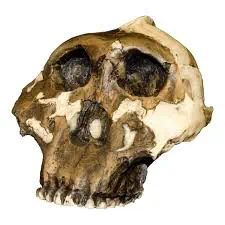 “When we found the Paranthropus molar, it got really, really exciting,”
“When we found the Paranthropus molar, it got really, really exciting,”
Another team member Blasto Onyango, head preparator of the National Museums of Kenya, is the one who actually spotted the first of the two molars. It happened during a thunder storm, as Finestone was close by on a hill. Workers were lifting up a cache of hippo bones using a crane.
It lay intermingled with hammerstones and sharp flakes that Finestone recognized as early Oldowan tools, an ancient technological breakthrough long thought to be a defining hallmark of our genus, Homo.
Professor Plummer and his team have just released their research paper outlining their hypothesis. Plummer et.al. strongly hint that the stone tool maker at Olduvai Gorge may have been Paranthropus boisei, not Homo habilis as previously believed.
From Natural History Museum – London (nhm.org), February 2023,
Oldest remains of ancient human relative Paranthropus suggest possible tool use
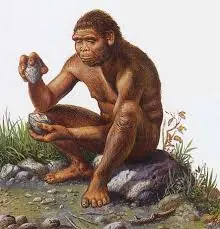 Hundreds of tools used for cutting, scraping and pounding food were discovered as part of excavations in Nyayanga, a site found on the shore of Lake Victoria in Kenya. Known as Oldowan tools, these artefacts may be up to 400,000 years older than any previously known example.
Hundreds of tools used for cutting, scraping and pounding food were discovered as part of excavations in Nyayanga, a site found on the shore of Lake Victoria in Kenya. Known as Oldowan tools, these artefacts may be up to 400,000 years older than any previously known example.
Not only are these tools older than previously known, but also more widespread.
Continuing:
While the manufacture and use of Oldowan technology is generally thought to be associated with early relatives of modern humans, such as Homo habilis and Homo erectus, the discovery of two teeth from Paranthropus, another ancient human relative at the same site suggests potential use by other species.
Of course, Mary Leakey with husband Louis nearby in camp, discovered both Paranthropus boisei (first termed Zinjanthropus boisei – “man of East Africa”) in 1959, and then Homo habilis in 1962. They had been excavating and exploring the famous Olduvai Gorge for some 29 years before the Zinj discovery was made. During that time they uncovered thousands of what are called Olduwan stone tools.
Louis Leakey, a man of flare and flamboyance
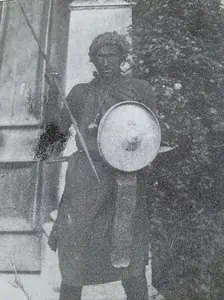 Leakey was regarded in the day as a highly successful paleo-anthropologist, naturalist and archaeologist. But during the Paranthropus boisei and Homo habilis era in the early 1960s, he had just come off a series of spectacular failures that had tarnished his reputation. Leakey suffered financial hardships and questionable expenditures. Moreover, he had neglected to record the exact locations of some archaeological finds that he had previously boasted about.
Leakey was regarded in the day as a highly successful paleo-anthropologist, naturalist and archaeologist. But during the Paranthropus boisei and Homo habilis era in the early 1960s, he had just come off a series of spectacular failures that had tarnished his reputation. Leakey suffered financial hardships and questionable expenditures. Moreover, he had neglected to record the exact locations of some archaeological finds that he had previously boasted about.
Coming off of these disasters, Leakey had desperately wanted to find the first in the line for genus Homo.
As the story goes from multiple sources, Mary Leakey had taken a stroll with her two Dalmatians, on a mid-summer day at Olduvai. Louis was gravely ill in bed at camp. She spotted a skull top on a dusty hillside and rushed back to camp to alert Louis. He stumbled out of bed. They drove the land rover to the hillside. When he first laid eyes on the fossils, he exclaimed something to the affect of “oh fuck, that’s a goddamn Australopithecus.”
But soon thereafter Louis warmed up to Zinj (dubbed “Dear Boy”) realizing that it could be the tool-maker.
One instance the Leakeys were having dinner with young American paleo-anthropologist Clark Howell in Nairobi. Louis hid the skull in a covered dinner plate at the restaurant and proclaimed to Howell, that they had found something magnificent. He lifted the cover for dramatic effect. Howell was astonished.
Note – Of particular interest to readers of Subspecieist, Louis Leakey was regarded as a dissident paleo-anthropologist in his day, and even an early proponent of race realism, quoted in 1961: “There are major differences, both mental and psychological, which separate the different races of mankind…” Photo of a young Louis Leakey from the 1920s “showing off” in full Kikuyi dress.
Zinj a “staggering discovery,” but was it the Tool-maker they’d been searching for?
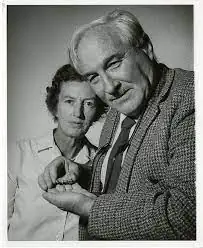 Louis premiered Zinjanthropus at a paleo-anthropology conference later that year and proclaimed it to be the progenitor of mankind. (Ref. “Ancestral Passions: The Leakey Family” published 1995, Simon & Schuster, pp 190-193, Amazon)
Louis premiered Zinjanthropus at a paleo-anthropology conference later that year and proclaimed it to be the progenitor of mankind. (Ref. “Ancestral Passions: The Leakey Family” published 1995, Simon & Schuster, pp 190-193, Amazon)
For thirty years, Louis and Mary had been pulling out stone tools from Olduvai Gorge, but the maker had never been found. And now after thirty years, this staggering discovery had been made. — Phillip Tobias, Univ. of Witwatersrand
From the History Channel via YouTube, Ape to Man documentary, 1 hour in, 2003:
Louis Leakey had waited twenty years to find this tool-making ancestor. But this was not what he had expected to find. The skull was more ape like than he had ever imagined. But it was in the same geological layer as the tools. The logic was inescapable. This must be the tool-maker, and therefore, the beginning of humanity… it had a small brain but massive teeth and jaws… But if Zinj was using tools, why did it need such powerful jaws. Leakey overlooked the question and announced Zinj as the tool-maker.
Zinj the toolmaker lasted about two years. Then in 1962, Mary made another miraculous find – Homo habilis.
As Ann Gibbons further explains at Science, Zinj was quickly overshadowed by Homo habilis. And to paleo-anthropologists of the day, it just made more sense that so-called Handy Man was the maker of the tools.
In 1955 (sic), Louis and Mary Leakey discovered the Nutcracker Man, a skull with a robust jaw and teeth now classified as Paranthropus boisei, in the same 1.8-million-year-old layer of sediments as Oldowan tools. But Mary Leakey soon found a skull of Homo habilis (Latin for “handyman”) in the same layer and thought that species, in our own genus, was a better fit as the principal toolmaker.
* Note – The Nutcracker Man skull was actually discovered on July 17, 1959, not 1955.
Plummer elaborates at LeakeyFoundation.org:
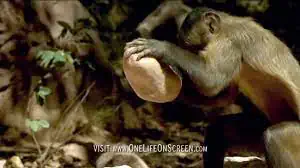 Oldowan tools had long been associated with our own genus, Homo, and were once considered a marker for the beginnings of human modernity. While we can’t demonstrate Paranthropus actually made these tools, this species is so far the only suspect at the scene of the crime.
Oldowan tools had long been associated with our own genus, Homo, and were once considered a marker for the beginnings of human modernity. While we can’t demonstrate Paranthropus actually made these tools, this species is so far the only suspect at the scene of the crime.
Seems Paranthropus was butchering Hippo meat.
We found evidence of meat cutting on the edges – but the smoking gun was the cut and percussion marks found on several hippo individuals associated with these stone tools.
Famed paleo-anthropologist and colleague of Australopithecus afarensis – Lucy discover Donald Johanson, professor Bernard Wood of GWU, is quoted at Science:
“Homo [habilis] was always given credit for the tools…”
Now Plummer and company may have significantly altered the entire trajectory of Middle Pleistocene human origins with two simple teeth, found at just the right spot.
Miner/geologist and dissident paleo-anthropology expert Alan van Arsdale offered this observation to subspecieist:
The ability of Capuchins (New World monkeys) to make Homo grade flakes from cores along with other evidence suggests that large brains are not required to make advanced stone tools.
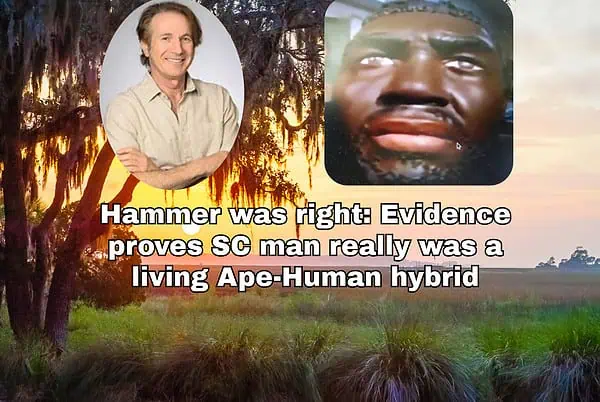

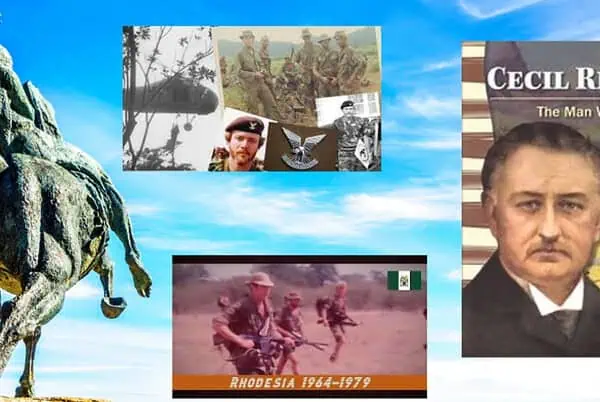
“Advanced” stone tools aren’t that “Advanced.”
Apes and monkeys throw things at their enemies, dirt, gravel, feces, sticks, and branches, so throwing stones as a weapon, isn’t that big of a deal, and was probably common enough in any apelike group, and probably used, and forgotten, and discovered over and over again throughout the evolutionary history of the species.
Similarly, dressing stones to a sharp edge, was common over their evolutionary history, but it would be way less common, than just using them as weapons, cutting a finger on a sharp edged stone, would lead to the use of “that” stone to cut something else, and when “that” stone got dull, they would search for other sharp stones, and only later would they understand how to sharpen stone, and that too, would have been discovered, and lost many times. before it later became common in larger brained species.
Parathropus boisei may have been found with the bones of hippos, because it was something else on the menu, of what ever killed the hippos, just as the Homo Naledi bones that Lee Berger found, at Rising Star Cave, were more likely food for whatever species made the few fire remnants in that cave.
Erik, I’m still looking at the proposition that arm proportions gave sapiens vs. neandertals a selective advantage in throwing rocks for defense and hunting.
But to answer the question, Is Louis Leakey Vindicated by this 2017 development?
Not to my way of thinking.
Three generations later, we still know next to nothing about Zinjanthropus/Paranthropus/Australopithecus boisei. Beyond its relatively complete thick, ergo-implied skull, jaws and teeth even today it’s all just Wild Ass Guess.
Louis Leakey was only the first perpetrator, but at least he had the excuse of being a pioneer. He found Olduwan tools and Zinjanthropus thereabouts so BAM boisei was The Toolmaker and hence a direct ancestor of Homo sapiens, case closed.
But he had to do the quick shuffle just two years later when he dug up another apparently more-human hominid — habilis. Hey it only goes to figure that the bigger-brained dude had to be the owner of those tools and the true ancestor, right? And so Zinj became a primitive non-linear paleo orphan. . . .
Today, we still don’t know Zinjanthropus’ size, gait, body proportions, diet is credibly debated, apparent curved fingers reminiscent of arboreal heritage and not best-suited for breaking rocks into tools.
So two molars attributed to boisei were found scattered amongst a pile of butchered hippo bones. Interesting. Intriguing. Thought-provoking. Eye-widening.
But is this proof that boisei lived 400,000 years earlier than previously thought?
https://humanorigins.si.edu/evidence/human-fossils/species/paranthropus-boisei
Co-deposited bones proves those hippos and boisei were contemporaneous?
And as the original article points out, if contemporaneous, is this evidence that boisei feasted on these hippos or that boisei was also on the menu of a different hominid?
I don’t see this 2017 Plummer discovery as game-changing, just reinforcing. There are hints of even older tool use elsewhere that were not human-associated either.
For me, this is just one more stitch in that tapestry showing that the primate framework humans eventually sprung from was time-tested for a very very long time before evolution contemplated us and Homo reached critical mass.
Regarding the Louis subspecieist angle, well he had the benefit of being unrestrained by unscientific political ideology and he gets credit for getting that one right.
As for woketards who would love to be triggered by Leakey’s nativist costuming, all I can say is that if you want to find really devastating physical appropriation just cruise down an inner urban street and count the black women with straight and blonde hair.
I admit that, like pretty much everyone, I put boisei aside in the 60s and 70s when it became apparent he was a dead-end cousin of humanity. There were simply more interesting hominid fossils to focus on.
Now scientific interest of boisei has returned as it should, but as far as I know we seem to be left with the same general situation.
Until this 2017 finding of two boisei teeth in the vicinity of hippo bones, nobody — except for Louis Leakey’s initial Olduwan claim that he quickly renounced — has even suggested that boisei was anything but herbiverous.
Other than two teeth lying with the hippos there seems to be no indication whatsoever that boisei was even a carnivore !
The cranial and dental morphology are undeniably herbiverous. In fact, the cutting edge of study on boisei today is WHAT KIND of plants it ate and why:
https://www.nature.com/articles/s41598-021-86642-z
Now I’m not closing my mind that boisei may have liked his occasional burger. But it’s going to take more than those two lonely teeth to convince me.
And what about those teeth? I would really really like their provenance secured morphologically and geologically, especially because up until this nebulous outlying finding the evidence was that boisei didn’t exist until hundreds of thousands of years later.
Great comments. Mostly agree with your assessments. I do think this puts Paranthropus in contention. Not certain, but Dear Boy is up there. To quote some crappy 1970s boxing move, “he’s a contender.”
Plummer presentation begins on Nyayanga at 16:00 :
https://www.youtube.com/watch?v=VJ-QudYxpAM
Apparently only one of the two teeth was found in the vicinity of Olduwan tools. “Tooth has all the hallmarks of paranthropus so we’re calling it paranthropus.” That would expand the range of boisei finds by some 800 miles and hundreds of thousands of years further back.
Olduwan is seen as butchering tool technology. Nyayanga is a massive butchering site. From morphology and other sites, Paranthropus boisei has been thought to be exclusively vegetarian.
But Plummer also sees some “heavily pounded” cobble stones around. He says that non-flaked plant-pounding cobbles of hardest substance were purposely transported seven miles with “advanced planning” to — get this — this BUTCHERY site.
I know the first thing I would think to bring to the hunt of large, deadly megafauna is as many cobblestones as I could carry. Along with my parcels of unprocessed veggies for carcass-side dining.
Almost realizing the silliness of it, as an afterthought Plummer says hey you know Olduwan flakes could also be used to cut your taters and greens !
Based on this evidence and reasoning, Plummer claims his Nyayanga find dispels three separate propositions previously thought to be true:
Paranthropus boisei could be a maker of Olduwan tools; boisei is not just a plant eater; Olduwan is not just a butchering toolkit but also an omnivore tool technology.
This dude is all over the place. I’m smelling something bad stuck to my shoe.
If you watch Plummer’s whole explanation, he says here we have Olduwan industry because around the hippos we have some flake tools. He adds that there is also some cobble that has some chip offs one just one end, with some pounding marks on the other end. He says that is part of an Olduwan tool kit.
BUT…
He identifies other cobble at the site that is round and intact except for heavy pounding marks. He says that these are made of quartz, very hard rock unsuitable for making Olduwan flakes. He gives a simple and sensible explanation that these came from a geological site seven miles away. He says that this is the paragon of tools for processing plants to eat.
So these vegetarian quartz cobbles are either heirloom tools to carry on the ready or dedicated for a major expedition.
But in the case of Nyayanga, those vegetarian cobbles were left behind and supposed to have been used after serious megafauna kills.
So what does Plummer think? Rather than acknowledging that we have could be looking at two distinct food processing technologies here, he conflates the two.
He ponders that Paranthropus could be using Olduwan butchering technology AND using Olduwan kit and vegetarian cobble to process plants — at a major butchery site.
Sorry, but no nice way to say it . . . this is flaccid reconstruction.
Shutting up now.